HOME >> LIFE
Tons of bun: A guide to steamed Chinese snacks
Source:Globaltimes.cn Published: 2014-1-1 18:56:00
| Editor's Note |
Following Chinese President Xi Jinping’s visit to the steamed bun chain last weekend, crowds swarmed to Qingfeng Steamed Bun Restaurant, sparking a renewed love affair with this traditional food. With more than 20 kinds available across China, here is a guide to the most well known brands, flavors and varieties.
| Famous Varieties |
Qingfeng steamed buns
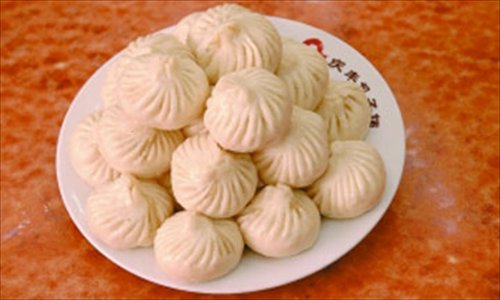 |
Founded in 1948 and originally named Wanxingju, this popular Beijing chain changed its name to “Qingfeng Steamed Bun Restaurant” in 1976. Qingfeng strictly monitors its bun-making process from the raw materials to the individual weights. Popular fillings include pork and scallion, beef and carrot, as well as Chinese chives, egg and shrimp. |
Goubuli steamed stuffed buns
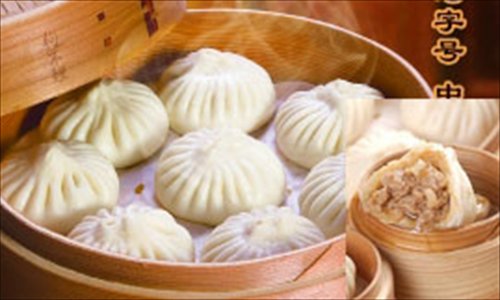 |
Goubuli steamed stuffed buns are synonymous with Tianjin. The chain’s beginnings go back to 1858 and a young man named Gao Guiyou, also known as “Gouzi” (puppy), from Yangcun of Wuqing county. To prepare the buns, half-leaven dough was rolled into thick circular wrappers 8.5 cm in diameter. The filling contained a precise ratio of fat to lean pork of three to seven, mixed with traces of water, pork stock, sesame oil, soy sauce, smashed ginger and scallions, and other ingredients. The filling was added and the wrapper pinched together to make 18 tucks, like a white chrysanthemum, and steamed. The color, shape, taste and aroma all stood out, attracting more and more customers from further away. |
Ding Tai Fung
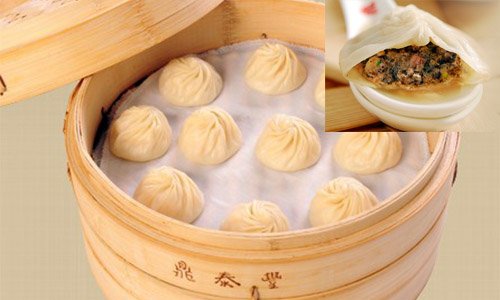 |
Founded in 1958 in Taiwan, Ding Tai Fung Restaurant was put on the map for its famous xiaolongbao, or "small steamed bun." Now, the restaurant is all over the map with restaurants in Japan, the US and Singapore. The Daily Meal, a cuisine website in the US, ranked Ding Tai Fung first among the 101 best restaurants in Asia of 2013, according to the Ding Tai Fung website. |
Shengjianbao (pan-fried buns)
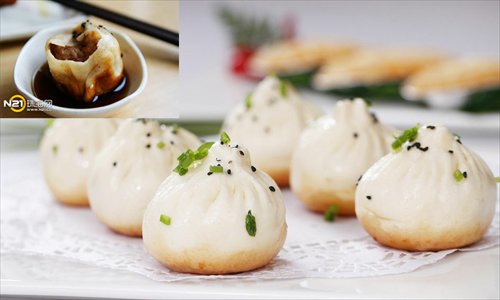 |
Shengjianbao are a Shanghai delicacy with a hundred-year history. Originally served in teahouses, shenjianbao are now a popular street food. The bottom of the buns is pan-fried and topped with sesame seeds and chopped chives. They are slightly juicy and have a pleasant crisp taste. Traditional fillings include fresh pork and pork jelly, but are now also available with chicken and shrimp. |
Xiaolongbao, or "small steamed bun"
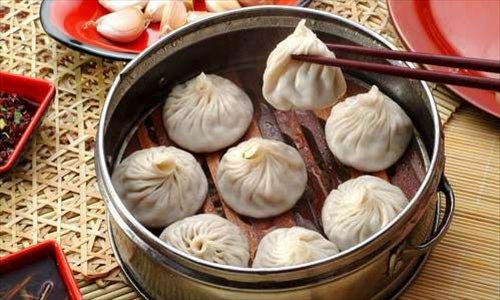 |
Xiaolongbao, or "small steamed bun", is a type of traditional stuffed bun popular in Shanghai, Wuxi, Changzhou and other places in the south of the lower reaches of the Yangtze River. The buns are usually steamed in specially-made small bamboo steamers, hence the name. The nice-looking buns are small in size, with a thin dough skin and lots of filling. The buns are also filled with soup, tasty and refreshing. The skin is made of flour dough and it is so thin that a freshly steamed bun looks semitransparent. The skin is elastic but will not stick to your teeth. There are various types of fillings, with pure pork being the most popular choice. Sometimes, crab meat, crab yolk or shrimp balls are added into pork as the filling. |
Kaifeng juicy steamed buns
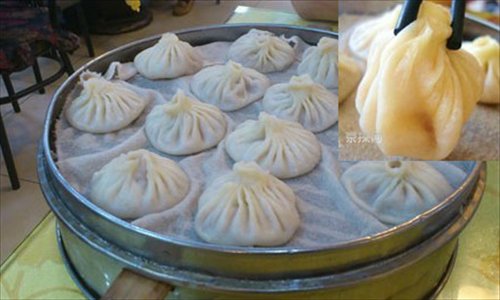 |
Kaifeng, Henan Province is famous for buns made with a savory reservoir of broth inside. Once considered an imperial food during the Northern Song (960-1279), the near-transparent skin requires 32 folds to ensure the broth doesn’t leak while steaming. This unique process makes the buns resemble chrysanthemums on the plate, but hanging lanterns when held between chopsticks. |
Cha siu bao
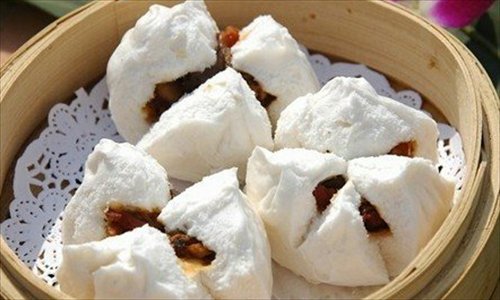 |
Hailing from Guangdong Province, cha siu bao are served in small wooden steamers and are stuffed with a rich filling of roast pork, oyster sauce, and other spices. |
Baked mutton buns (samsas)
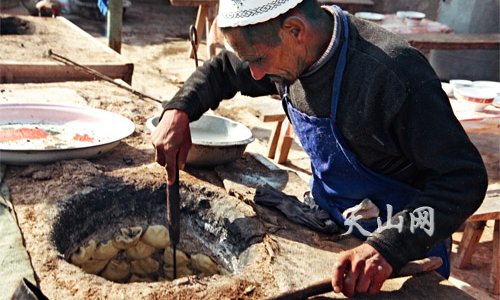 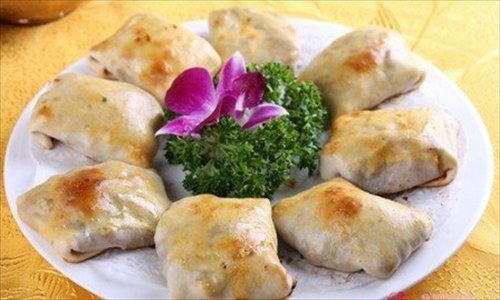 |
As an important part of Uyghur cuisine in China’s northwestern Xinjiang, these square-shaped buns are baked in an earthen pit or round oven. The filling is made from diced mutton, onion, salt, pepper and other regional spices. The combination of mutton and onion makes samsas both delicious and nutritious. |
Posubao
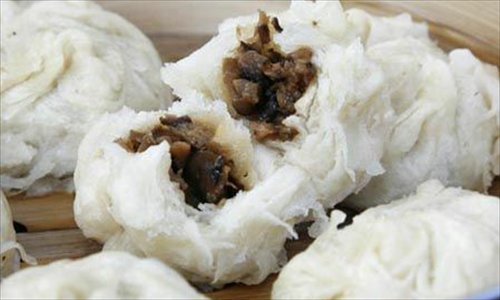 |
This unique bun from Yunnan Province is wrapped in a crisp skin made from dough and lard and stuffed with a sweet and salty meat filling that melts in your mouth. Locals say that the simple presentation of Posubao affords chefs to make the skin crispier. |
Red bean buns
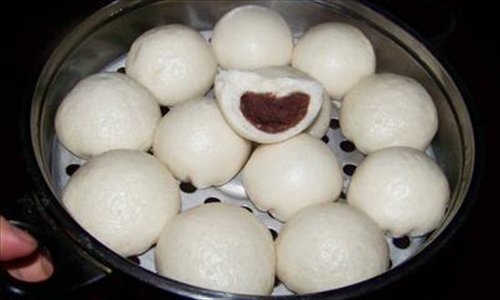 |
Originating in Beijing and Tianjin, the secret to these steamed desert buns is the red bean paste. In order to make the filling, beans are first boiled and mashed, then sugar is added and the paste is fried in oil. |
Sticky rice buns with sweet bean filling
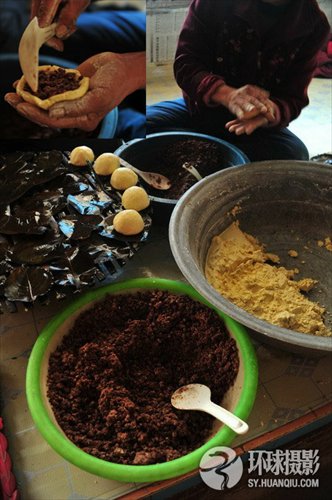 |
Tracing its origin to the Manchus of northern China, the outer skin of these sweet buns is made from yellow rice and filled with round balls made of red beans and sugar. They are steamed for 20 minutes on high heat. |
Source: Agencies - Globaltimes.cn
Web editor: guwei@globaltimes.com.cn
Posted in: Food